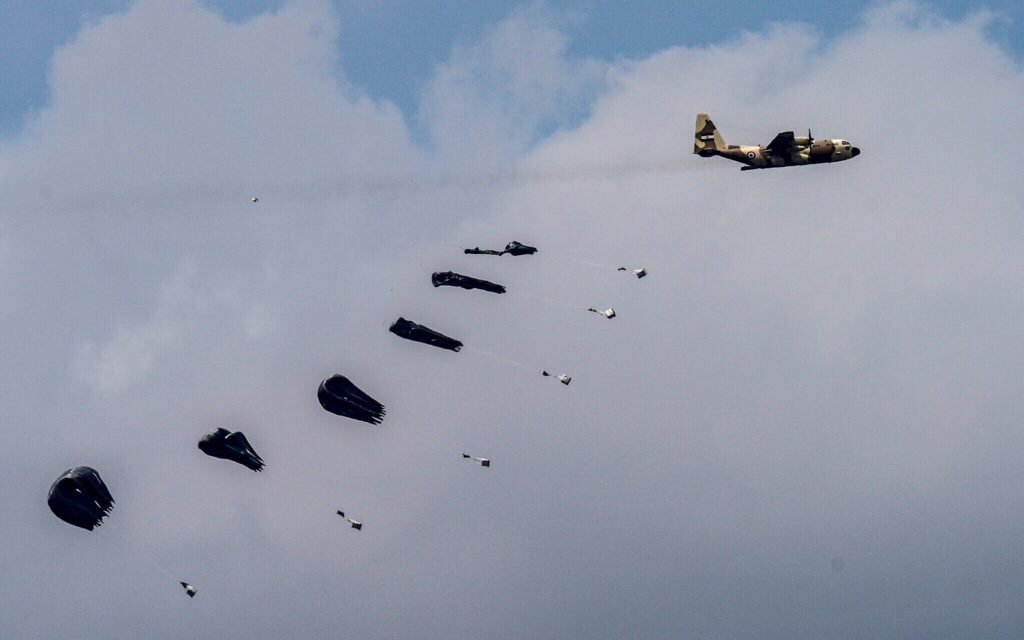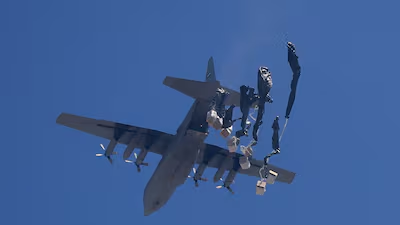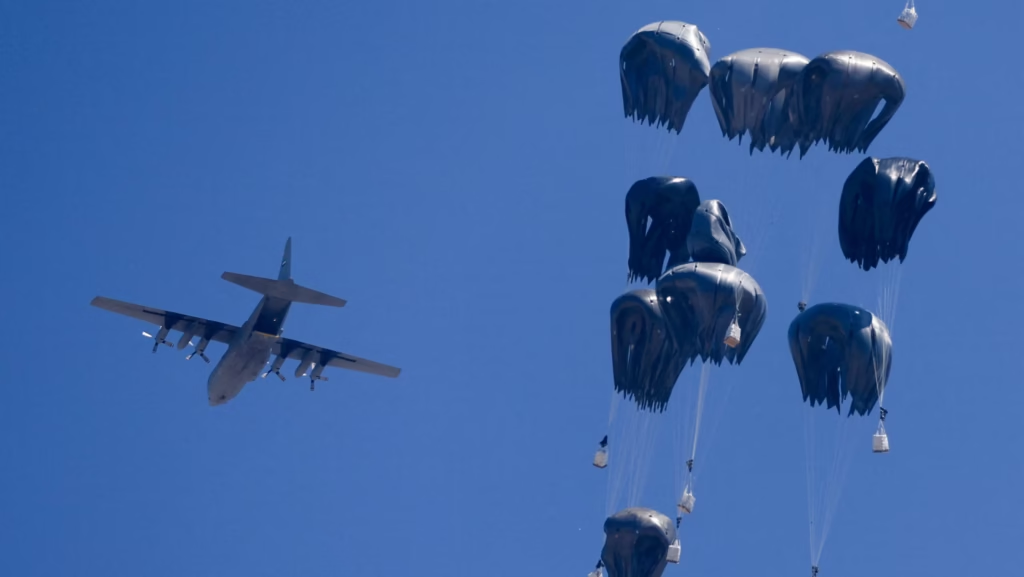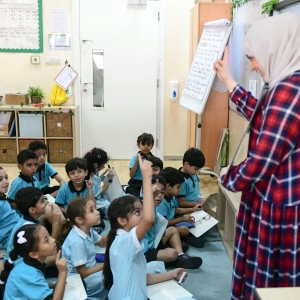In a powerful show of humanitarian support, the UAE and Jordan Gaza aid airdrops have brought vital relief to civilians trapped in one of the most devastated conflict zones in the world. With ongoing violence severely limiting access to basic necessities like food, clean water, and medicine, the air drops have emerged as a lifeline for many innocent families suffering in Gaza.
This joint effort by the United Arab Emirates and the Hashemite Kingdom of Jordan reflects the deep concern of both nations for the humanitarian catastrophe unfolding in Gaza. As traditional aid delivery through land crossings remains difficult and dangerous, these airdrops have provided a faster and safer way to get urgent help to those in need.
The Urgent Need for Aid in Gaza
For months now, the Gaza Strip has been experiencing a severe humanitarian crisis. The conflict has left many homes destroyed, medical facilities overwhelmed, and food supplies depleted. Thousands of families have been displaced, living in temporary shelters or out in the open with limited access to clean water and sanitation.

With land routes heavily restricted and under threat of attack, it has become nearly impossible for trucks carrying humanitarian aid to reach the heart of Gaza. In response to this worsening situation, the UAE and Jordan decided to take action from the skies.
UAE and Jordan’s Collaborative Effort
The UAE and Jordan Gaza aid airdrops represent a remarkable collaboration between two nations with a long-standing commitment to humanitarian work in the region. Both countries coordinated closely with international partners, NGOs, and the relevant UN agencies to plan and carry out these high-risk but high-impact missions.
Objectives of the Airdrops:
- Deliver emergency food supplies
- Provide clean drinking water
- Supply basic medical kits and hygiene products
- Reach areas that are inaccessible by road
Each airdrop mission involved military and humanitarian personnel working together to ensure supplies landed in safe zones designated for civilians. In many cases, local volunteers on the ground were pre-informed to retrieve the packages and distribute them among vulnerable populations.
What Was Delivered?
According to official sources from both governments, the contents of the aid packages varied depending on the needs of the target areas. However, they typically included:
- Ready-to-eat food like canned goods, rice, lentils, dates, and energy bars
- Bottled water and water purification tablets
- Basic medical supplies including bandages, antiseptics, and painkillers
- Children’s nutrition packs with baby formula and vitamins
- Blankets and clothing to protect against the elements
These supplies were carefully packed to withstand the drop impact and were often fitted with parachutes to slow descent, minimizing the risk of damage or injury.

The Human Impact: Voices from the Ground
The real impact of the UAE and Jordan Gaza aid airdrops is best understood through the voices of those who have received the aid.
“We hadn’t eaten in two days. Then we heard the sound of a plane, and parachutes started falling with packages. It felt like a miracle,” said Ahmed, a father of three from Khan Younis.
“My daughter was sick and we had no medicine. The package had basic medical items. It saved her,” shared Hiba, a mother sheltering in Rafah.
While the deliveries are not enough to meet the entire population’s needs, they have provided crucial support during desperate times and given hope to people who felt forgotten by the world.
International Reactions and Support
The global community has praised the UAE and Jordan Gaza aid airdrops as an example of regional leadership and moral responsibility. The United Nations Office for the Coordination of Humanitarian Affairs (OCHA) acknowledged the significance of these airdrops, especially when ground routes remain blocked or unsafe.
Several international humanitarian organizations, including the Red Crescent and Doctors Without Borders, have expressed gratitude to the UAE and Jordan, urging more countries to step in with similar efforts.
Even nations outside the Middle East have taken note. Some European countries have discussed the possibility of joining or supporting similar air missions to ensure a more sustainable supply of aid.
Challenges and Risks Involved
Despite the good intentions and careful planning, air-dropping aid into a conflict zone like Gaza comes with enormous risks:
- Safety of pilots and crews: Aircraft flying at low altitudes may face danger from anti-aircraft fire or accidents in a high-stress war zone
- Delivery accuracy: There is always a risk that aid could fall into the wrong hands or miss intended drop zones
- Logistical complications: Weather conditions, airspace restrictions, and real-time security updates affect the timing and success of each mission
Both UAE and Jordan have acknowledged these challenges but emphasized that the potential to save lives outweighs the risks.
Political and Humanitarian Implications
This joint humanitarian move may also have broader implications in the political landscape. As the international community debates possible solutions to end the Gaza conflict, the UAE and Jordan Gaza aid airdrops demonstrate that some regional powers are taking immediate, life-saving steps rather than waiting for diplomatic breakthroughs.
It is a reminder that in the face of political gridlock, humanitarian action must not be delayed. Civilians, especially children, the elderly, and the injured, cannot wait for ceasefires to eat, drink, or receive medical treatment.
Future Plans and Expansion
Sources within both governments have confirmed that more airdrop missions are being planned. Logistics teams are analyzing which areas remain underserved and how air relief can be expanded in coordination with other nations and NGOs.
There are also discussions about using drones for more precise, smaller deliveries in heavily populated urban areas, a method that may reduce risks and improve efficiency.
Additionally, both countries have pledged to continue funding humanitarian support even beyond air deliveries, focusing on rebuilding infrastructure and medical facilities once the situation stabilizes.

The Broader Context of Aid in Gaza
The UAE and Jordan Gaza aid airdrops are part of a larger effort by the international community to address the massive humanitarian needs in Gaza. According to the UN, over 2 million people in Gaza are in urgent need of food, shelter, and medical care. The World Food Programme has warned of a looming famine, and hospitals report critical shortages of medicine and equipment.
While airdrops alone cannot fully meet the needs, they serve as a critical stopgap solution. Experts stress the importance of opening safe humanitarian corridors and negotiating temporary ceasefires to allow for more efficient ground aid delivery.
A Message of Unity and Humanity
In a time of great division and suffering, the UAE and Jordan Gaza aid airdrops send a powerful message of unity, compassion, and responsibility. These nations have not only delivered food and medicine but also renewed a sense of hope among Gaza’s civilian population.
Their actions prove that even in the darkest moments, it is possible to act with humanity, to reach out to those in need, and to save lives without waiting for perfect political solutions.
Conclusion: A Call to the World
The humanitarian crisis in Gaza is far from over. But the UAE and Jordan Gaza aid airdrops show that action is possible and necessary. These efforts should inspire more countries to step forward, whether through air, land, or sea, to help civilians who are caught in the crossfire of a tragic conflict.
As the global community watches, the question remains: Who will be next to follow their lead?
Do follow UAE Stories on Instagram
Read More: Why UAE Is Ditching SMS and Email OTPs for Safer Login













